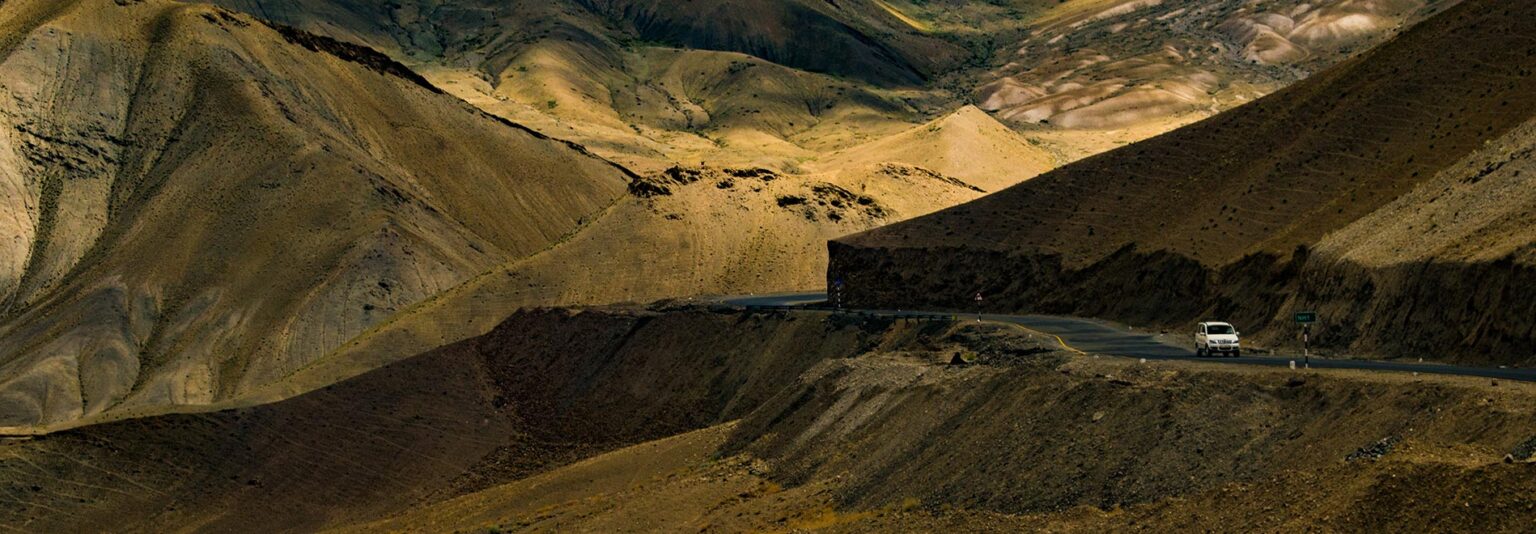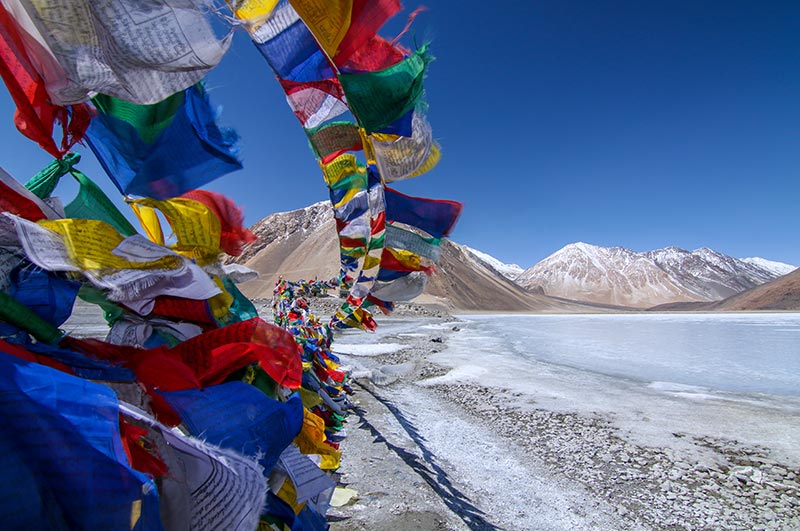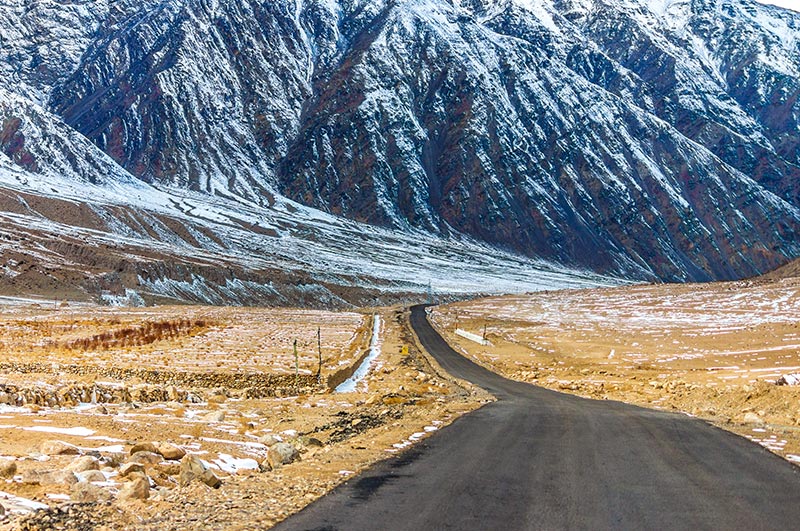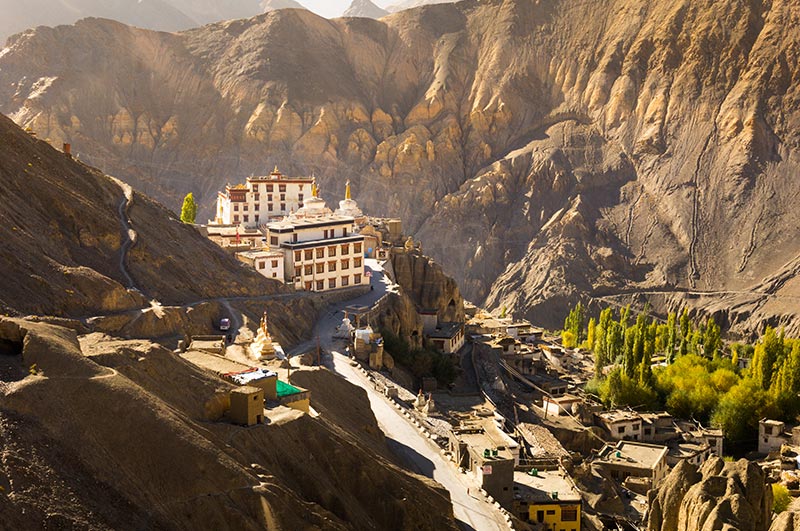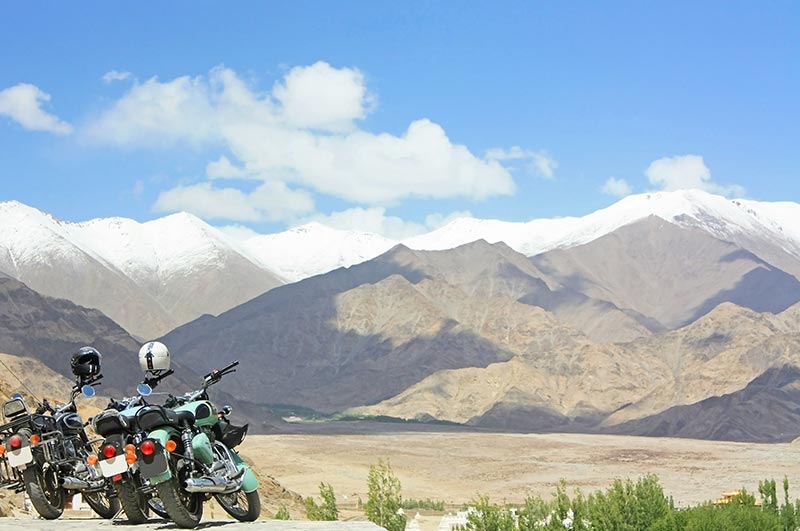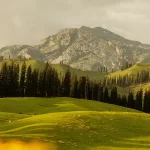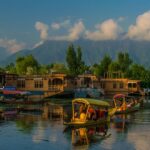Ladakh: Trip to Himalayas
The presence of the mighty Himalayas has placed India on the world map as one of the most beautiful holiday destinations. How about visiting this thrilling part of India, adorned like the crown, with white glittering jewels of Himalayan snow? Ladakh is a part of the barren landscape and has the title of being the world’s highest motorable pass. It is a land of jagged peaks which is alluring. The extremities and harsh climate of Ladakh make it a favourite among adventure junkies. The wilderness and overwhelming natural beauty of Ladakh along with the towering mountains and Buddhist simplicity make it distinct from all other destination on Earth.
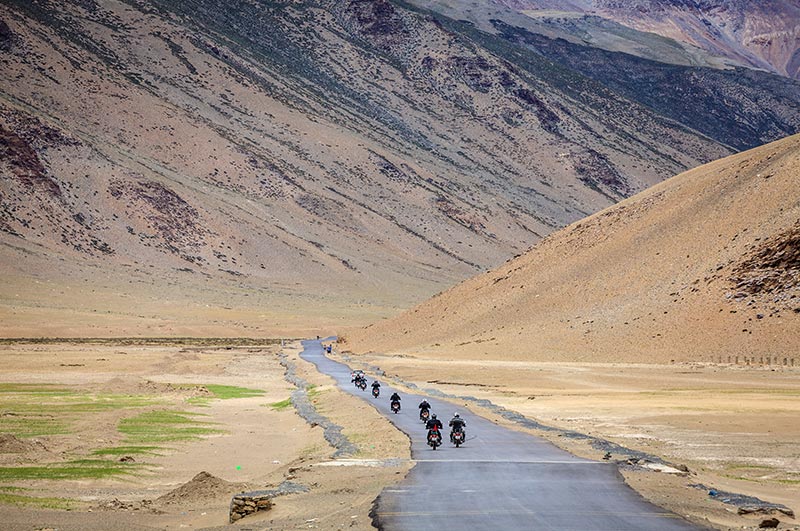
Geography of Ladakh
Ladakh literally means ‘the land of high passes’. It is bordered by the Himalayas in the south and by Karakoram Range of mountains in the north. The river Indus flows through this mystique land, further dividing his largest province of Jammu & Kashmir into Leh, Nubra, Zanskar, lower Ladakh, and Rapshu. Ladakh has a very tough and rugged terrain which captivates the heart of an adventure sports enthusiast. This land of the moody sky is perched at an elevation of 3000 meters above sea level and it extends in an area of 86, 408 sq km of which mostly remains uninhabited or sparsely inhabited.
Best time to visit Ladakh
Ladakh experiences extreme dry and cold climate. It is the cold desert of India which offers extreme hardship for the tourists. The place experiences summers during the months of August and September. Summers are the perfect time for visiting Ladakh as the temperature is mostly pleasant and temperature swings between 20 to 30 degree Celsius. It is during this time that the valley isn’t misty but clear for witnessing the spectacular view of the magical mountains. Ladakh is accessible by road only in summers. From November to March, winter envelops the valley and due to heavy snowfall, the place becomes inaccessible by road. Even during this time, adventure enthusiasts visit Ladakh for trekking by air.
How to reach Ladakh?
Given the rough terrain of Ladakh, it is very tough to find easy access to this ancient land. No railway services are available here. It is possible to reach here only via roadways or airways.
- By air : The climate of Ladakh makes air travel very unpredictable here. The main airport is in Leh, named Kushok Bakula Rimpochee Airport. The airport is connected to major cities in the country. Travelers need to plan their trip according to the nasty weather of the valley.
- By road : There are two main routes to Ladakh. The first one is from Kashmir valley through Kargil. This 434 km long route is open from June to November. The state government has taken steps to facilitate tourism in the valley and many deluxe buses are run by Jammu & Kashmir State Road Transport Corporation (J&K SRTC) between Srinagar and Leh.
- The second route is the Manali Leh route which is about 473km long. This route is open from mid June till October. The route encompasses the second highest motorable road which is about 17,469feet above sea level. Now that’s cool.
Top Places to visit in Ladakh
The Ex-Buddhist kingdom is the adobe of peace and tranquillity. This arid part of Himalayas has a spiritual breeze flowing as the colorful fluttering flags share their message to the mountains. Picture perfect gompas (Tibetan Buddhist monasteries) dramatically crown rocky outcrops amid whitewashed stupas and mani walls, Prayer wheels spinning clockwise everything resonates with the aura of the mountains and fills the valley with the magical breeze.
1) Pangong Tso Lake
Situated on the Changtang plateau in eastern Ladakh region is the most popular tourist destination in Ladakh. The place is famous as a camping site and for the natural scenic beauty of the breath taking lake. This is the same site where the famous Bollywood movie 3idiots was shot.
2) Zanskar Valley
This is the true beauty of Ladakh. Zanskar Valley is the most amazing destination here. Set amidst the desolated Himalayas is this nature’s paradise where the steep terrain covered with snow reflects the sky. The place is known for River rafting in Zanskar River. The valley can be visited only from June to September when the roads are cleared off the snow.
3) Kargil
Who can forget this celebrated battlefield of Kashmir? Kargil is the second largest town of Jammu & Kashmir and is situated on the bank of river Indus. The place is paradise for adventurers looking for trekking and mountaineering.
4) Khardung-la pass
This is the world’s highest motorable road and it is the gateway to the spectacular Nubra and Shyok Valley. The tri-armed Nubra Valley is famous for its two humped camels.
5) Nubra Valley
Famous for its unique Hunder Sand Dunes and Bactrian camels, the valley provides a surreal combination of the desert and mountains. The Diskit Monastery houses a 32-meter-high Maitreya Buddha.
6) Leh Palace
This is a 17th-century palace located over the town of Leh. It provides wide panoramic views of the region and is an architectural marvel, reminding one of the bygone Ladakhi kings.
7) Tso Moriri Lake
Located inside the Changthang Wildlife Sanctuary, this is an unknown lake to most of us. This place has been the breeding ground of black-necked cranes and bar-headed geese and many more rare species of birds.
8) Magnetic Hil
This optical-illusion hill defies gravity because it seems that a vehicle goes against gravity to climb a hill. It’s always one of those stops one cannot miss if traveling from Leh to Kargil or vice versa.
The above mentioned destinations are just a peek at the treasure of Ladakh, the real wealth lies in experiencing this and other enthralling and challenging destinations like Magnetic Hill, Spituk Gompa, Hemis National Park among others. The beauty of the valley is eye and soul pleasing. Visit this mysterious land to experience the magic of the mountains.
Leh : Capital of Ladakh
Leh is the capital of Ladakh and a nerve center where every travel plan for this region is born. Leh is a halt that most of the tourists on their way to Ladakh undertake, at a height of 3,524 meters. Surrounded by such mighty mountains, Leh is offering the best and worst of everything in the market- modern times with ancient times. The town of Leh mainly consists of a busy Leh Market, Shanti Stupa, and Stok Palace. Leh lies 434 km away from Srinagar and 473 km away from Manali. Leh also serves as the gateway to seeing the broader Ladakh region.
Trekking Routes in Ladakh
Chadar Trek (105 km)
It’s an iconic trek over the frozen Zanskar River during winter. It is a completely unparalleled experience, with icy caves, frozen waterfalls, and the raw wilderness of Ladakh.
Markha Valley Trek (65 km)
This trek is best suited for the exploration of cultural and natural beauty in Ladakh. It passes through quaint villages, monasteries, and views of Kang Yatse Peak.
Nubra Valley Trek (70 km)
This trek from Phyang to Hunder will be a blend of cultural exploration with breathtaking views of sand dunes and mountains.
Stok Kangri Trek (40 km)
It is one of the strenuous treks to the top of Stok Kangri, and it has tremendous panoramic views of Zanskar and Karakoram ranges.
Sham Valley Trek (30 km)
This trek is also known as “Baby Trek,” perfect for those novices. The monasteries such as Likir, Alchi, and Spituk can be covered, while Ladakh’s peaceful villages can be experienced.
Touring in Ladakh:
On reaching Leh, taxis, scooters, and bicycles can easily be seen roaming around. For adventure tourists, hiring a Royal Enfield bicycle to conquer the tough roads of Ladakh is highly taken.
Hemis Monastery
Ladakh’s most prominent monastery is famous for its annual Hemis Festival in honor of Guru Padmasambhava. They are also known to store vast collections of thangkas as well as antiques.
Zanskar River: This is an absolute adventure activity as the river is great for white-water rafting. The scenery is merely breathtaking with rugged canyons.

